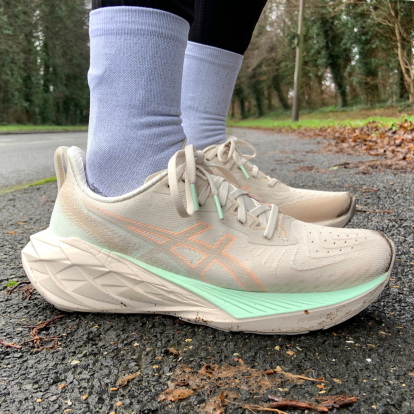Content Menu
● Understanding Shoe Size Differences
● Shoe Size Conversion Chart
● Factors Affecting Fit
● How to Measure Your Feet
● Tips for Buying Men's Shoes as a Woman
● Popular Styles of Men's Shoes for Women
● The Importance of Comfort
● Common Misconceptions About Shoe Sizes
● Conclusion
● FAQ
>> 1. How do I convert my women's shoe size to men's?
>> 2. Are there width differences between men's and women's shoes?
>> 3. What should I do if I can't find my size in men's shoes?
>> 4. How accurate is the conversion from women's to men's sizes?
>> 5. Can I wear men's shoes if I have narrow feet?
When it comes to shoe shopping, understanding the differences between men's and women's shoe sizes can be a daunting task. Many women find themselves drawn to men's shoes for various reasons, including style preferences, wider fits, or simply the availability of certain designs. This article will explore how to convert women's shoe sizes to men's, provide a comprehensive size chart, discuss factors affecting fit, and offer tips for finding the perfect pair of shoes.

Understanding Shoe Size Differences
General Size Conversion Rules
In general, women's shoe sizes are approximately 1.5 to 2 sizes larger than men's sizes. For example:
- If a woman wears a size 8 in women's shoes, she would typically wear a size 6.5 to 7 in men's shoes.
- A women's size 10 would convert to a men's size 8.5 to 9.
This difference arises due to variations in the design and construction of shoes for different genders. Men's shoes are often wider and have a different shape compared to women's shoes.
Shoe Size Conversion Chart
To help with conversions, here is a detailed shoe size conversion chart:
| Women's Size | Men's Size |
| 5 | 3.5 |
| 6 | 4.5 |
| 7 | 5.5 |
| 8 | 6.5 |
| 9 | 7.5 |
| 10 | 8.5 |
| 11 | 9.5 |
| 12 | 10.5 |
This chart provides a quick reference for converting between women's and men's sizes.
Factors Affecting Fit
When considering buying men's shoes, several factors can influence the fit:
- Width Differences: Men's shoes are generally wider than women's shoes. Women with wider feet may find that men's shoes provide a more comfortable fit.
- Arch Support: Men's shoes often have different arch support than women's styles, which can affect comfort levels depending on individual foot shape and needs.
- Style Variations: Some styles may not translate well between genders due to design differences. For instance, athletic shoes might fit differently compared to casual or formal footwear.
How to Measure Your Feet
To ensure you get the best fit when converting shoe sizes, it's essential to measure your feet accurately:
1. Stand on a piece of paper with your heel against a wall.
2. Mark the longest part of your foot (usually the toe) on the paper.
3. Measure the distance from the wall to the mark in centimeters or inches.
4. Use this measurement alongside the conversion chart to find your equivalent size in men's shoes.
Tips for Buying Men's Shoes as a Woman
When venturing into the world of men's footwear, here are some tips to keep in mind:
- Try Before You Buy: Whenever possible, try on shoes before purchasing them. Sizes can vary significantly between brands and styles.
- Consider Width Options: If you find that men's sizes are too wide, look for brands that offer narrow options or consider trying youth sizes if your foot size allows.
- Check Return Policies: If you're shopping online, ensure that there is a good return policy in case the size doesn't work out.
Popular Styles of Men's Shoes for Women
Women often gravitate towards specific styles of men's shoes that not only provide comfort but also make a fashion statement. Here are some popular styles:
- Sneakers: Men's sneakers often have more robust designs and come in various colors and patterns that appeal to women looking for sporty options.
- Loafers: These slip-on shoes are versatile and can be worn casually or dressed up for work or events.
- Boots: Men's boots offer durability and style, making them suitable for various occasions and weather conditions.
- Dress Shoes: Women may choose men's dress shoes for their sleek designs and comfort during formal events.
The Importance of Comfort
Choosing the right shoe size is crucial not only for style but also for comfort and health. Wearing ill-fitting shoes can lead to various foot problems such as blisters, bunions, and even long-term issues like plantar fasciitis.
When trying on men's shoes, pay attention to how they feel on your feet:
- Ensure there is enough room at the toe box without excessive movement.
- Check if the heel fits snugly without slipping.
- Walk around in them to assess comfort over time; what feels good initially might not hold up after extended wear.

Common Misconceptions About Shoe Sizes
There are several misconceptions surrounding shoe sizing that can lead women astray when shopping for men's footwear:
- All Brands Fit the Same: Shoe sizing can vary significantly between brands; always refer back to specific brand sizing charts when possible.
- Men's Shoes Are Just Bigger Women's Shoes: While there is some overlap in design elements, men's shoes are constructed differently regarding width and arch support.
- You Can Always Go Down a Size: While it may be tempting to downsize if men's shoes feel large, it's essential not to compromise on comfort or support by choosing an ill-fitting pair.
Conclusion
Understanding how to convert women's shoe sizes to men's can open up new possibilities for style and comfort. With the right information and tools at your disposal, finding that perfect pair of men's shoes becomes much easier. Remember to consider width differences and individual foot shape when making your choice.

FAQ
1. How do I convert my women's shoe size to men's?
To convert your women's shoe size to men's, subtract 1.5 to 2 sizes from your women's size.
2. Are there width differences between men's and women's shoes?
Yes, men's shoes are typically wider than women's shoes, which can affect comfort levels depending on foot shape.
3. What should I do if I can't find my size in men's shoes?
If you can't find your size in men's options, consider looking at youth sizes or brands that offer narrower fits.
4. How accurate is the conversion from women's to men's sizes?
The conversion is generally accurate but can vary by brand due to different sizing standards and designs.
5. Can I wear men's shoes if I have narrow feet?
Yes, but you may need to try different styles or brands since men's shoes are usually designed for wider feet.

















